Lava flows are masses of magma that pour onto the Earth's surface during an effusive eruption; they include both moving lava and the resulting solidified deposits. Lava flows come in a great variety of shapes and sizes. When the magma reaches the surface of the Earth it is then called lava. Also known as a parasitic cone, it forms around the secondary vent that reaches large volcanoes surface. Magma is molten or partially molten rock beneath the Earth's surface. Clearly the destructive potential of volcanoes is tremendous. Otherwise known as a pyroclastic density current, a pyroclastic flow refers to a fast-moving current of hot gas and rock that is moving away from a volcano. . It has been erupting almost nonstop since 1983! Tulane University: Volcanoes and Volcanic Eruptions. Small or large, volcanic bombs are a significant volcanic hazard and can often cause serious damage and multiple fatalities, depending on where they land. Fumaroles emit steam, which is created, when super-heated water turns into steam due to a drop in pressure as it emerges from the underground. Hawaii has volcanoes with many side vents that have built the islands with very wide bases. Most known magma chambers are located close to the Earths surface, usually between 1 km and 10 km deep. Tubes form by the crusting over of lava channels and pahoehoe flows. Our goal is to make science relevant and fun for everyone. document.getElementById( "ak_js_1" ).setAttribute( "value", ( new Date() ).getTime() ); 2023 (Science Facts). Volcanoes are found on both land and the ocean floor. The sounds played when An Impostor crawls through a vent on Polus. In addition to cone structures, volcanic activity can also lead to circular depressions (aka. Central vents are the most common types of volcanic vents. The answer key is below. Whether you need help solving quadratic equations, inspiration for the upcoming science fair or the latest update on a major storm, Sciencing is here to help. They grow largely by expansion from within. Any opening at the Earths surface through which magma erupts or volcanic gases are emitted. Fissures on the ground can be of a few meters wide by many kilometers long. When you reach out to him or her, you will need the page title, URL, and the date you accessed the resource. Some volcanoes have multiple vents, but there is only one main vent, or central vent. An operational definition of main vent is the opening where volcanic materials emerge from the primary conduit. Most volcanic cones have one volcanic crater, or central depression, at the top. Some volcanoes have multiple vents, but there is only one main vent, or central vent. This website uses cookies to improve your experience while you navigate through the website. administered through the Department of Geosciences at Oregon State University. Pyroclastic flows normally hug the ground and travel downhill from their eruption site. All rights reserved. Lava is the word for magma when it erupts onto the Earth's surface. What happens if the primary means of venting fails in SOLAS? A volcanos main vent is the weak point in the Earths crust where hot magma has been able to rise from the magma chamber and reach the surface. On continental land, water spouting from a hot spring is heated by the earths mantle (geochemically). In the case shown here the actual cracks in the rock under the scoria were only about 10-20 cm wide but so much scoria fell into them that they were wide enough to barely be jumpable. Their forms determine the varied types of eruptions that gave them shape. A vent enables a volcanic eruption. The release of volcanic gases and the eruption of molten rock result in a wide assortment of edifices, ranging from enormous shield volcanoes and calderas to fumaroles and small hornitos. When this occurs, the forces involved can propel magma, gas and ashes with considerable force, creating a pyroclastic flow. This magma surges through the surface of the earth, then solidifies, resulting over time in a classic volcano cone. Such flows can reach speeds of up to 700km/h (450mph), with the gas reaching temperatures of about 1,000C (1,830F). They write new content and verify and edit content received from contributors. Alissa enjoys writing about life science and medical topics, as well as science activities for children. Lighter than air Mixture of ash and gases, Short cracks on the Earth's crust through where lava flows, Fire curtains of gas and lava on the side of a volcano, Long cracks on the Earth's crust Through where lava flows. Many of these are located around the Pacific Ocean in what is known as the "Ring of Fire." There is no extra, free water pushed below the plate. They form when magma rises into a fracture or creates a new crack by forcing its way through rock. Volcanoes have created almost 80 percent of our planets surface, making the foundation on which lives thrive. Note that there are two parallel fractures about 50 m apart and forming a small graben. Theventmay be visible as a small bowl shaped depression at the summit of a cone or shield-shaped mountain. Slow-flowing molten lava creates gradual slopes. A magma chamber is a large underground pool of molten rock sitting underneath the Earths crust. A caldera is a large, usually circular depression at the summit of a volcano formed when magma is withdrawn or erupted from a shallow underground magma reservoir. The lava leaving the side vent causes the volcano to add a layer of lava and usually a layer of ash with each eruption. And yet, without these geological phenomena occasionally breaking through the surface and reigning down fire, smoke, and clouds of ash, the world as we know it would be a very different place. Some of these are erupting now and others coulderupt at some point in the future. Central vents are the conduit pipes through which magma is forced upward to the surface of the Earth, and then ejected as gases, lava or pyroclastic fragments. https://en.wikipedia.org/wiki/Plate_tectonics. Where they reach the surface of the volcano, they form what is referred to as a secondary. When volcanic eruptions of blasting lava have ceased, volcanic vents continue releasing steam and gas fumes through small openings surrounding a volcano which are called fumaroles. To a volcanologist, a volcano is a structure containing a vent or cluster of . Klauea volcano on the Island of Hawaii is one of the most active volcanoes on Earth. Volcanic eruptions can last days, months, or even years. Where they reach the surface of the volcano, they form what is referred to as a secondary vent. Let us know if you have suggestions to improve this article (requires login). A crater is formed as a result of a volcanic eruption. Heat does not easily escape from large bodies such as Earth by the processes of conduction or radiation. The ground shakes asmagma rises from within the Earth. A central vent sometimes can be enlarged by the collapse of its peripheral walls. Mauna Loa typifies a shield volcano, which is a huge, gently sloping landform built up of many eruptions of fluid lava. They are made of small pieces of solidlava, calledcinder, that are erupted from avent. Through a series of cracks within and beneath the volcano, the vent connects to one or more linked storage areas of molten or partially molten rock (magma). Fumaroles are other type of volcanic vents that form around volcanoes as openings on the Earth's crust; sometimes in collections of fumaroles. These cool before they hit the ground, are thrown many kilometers from the eruption site, and often acquire aerodynamic shapes (i.e. A side vent is an opening in the side of a volcano through which volcanic materials ( lava and gases) erupt. Looking at pictures of volcanoes, you can usually identify them by shape as being ashield volcanoorstratovolcano. Molten rock below the surface of the Earth that rises in volcanicventsis known asmagma, but after it erupts from a volcano it is calledlava. A lock () or https:// means youve safely connected to the .gov website. rises to reach the Earth's surface ; secondary vent - some magma may escape through the side of the volcano, particularly if the main vent . If you got between 0 and 1 correct answer: You can try it again! volcano, vent in the crust of Earth or another planet or satellite, from which issue eruptions of molten rock, hot rock fragments, and hot gases. Save my name, email, and website in this browser for the next time I comment. crater - this is found at the top of the volcano, where the magma erupts from. In addition to a central vent, these volcanoes sometimes have multiple vents around the top of the dome and the upper portion of the slopes. The part of the conduit that ejects lava and volcanic ash. Vesuvius, are andesitic volcanoes. Some domes form pointy spines, while others appear as a giant muffin, as opening flower petals, or as steep-sided stubby flows or tongues. The molten rock remains under extreme pressure, which causes the surrounding rock to crack and fracture, creating an outflow of the magma. Crater The crater or caldera is the bowl shaped feature on top of the volcano that the magma from the vent erupts form. As late as 1768, the first edition of the Encyclopdia Britannica gave voice to a common misconception by defining volcanoes as burning mountains, which probably are made up of sulphur and some other matter proper to ferment with it, and take fire. Today geologists agree that volcanism is a profound process resulting from the thermal evolution of planetary bodies. While every effort has been made to follow citation style rules, there may be some discrepancies. Omissions? What's the difference between lava and magma? Vent An opening in Earths surface through which volcanic materials escape. In one dictionary definition, a volcano is a vent in the earth's crust through which rock or lava is ejected. Do all volcanoes have side vents? 1 Where is the secondary vent of a volcano? Redoubt volcano with minor ash eruption. A volcano can host many lava domes over a long period of time, so these are technically not a "volcano type" but rather an eruption phenomenon. Hi Zoutsteen There are other types of volcanic vents. If the wind is blowing during the eruption, cinder is carried downwind before it's deposited into an oval shape. Now that we know the purpose of secondary means of venting, let us discuss the equipment that can act as secondary means of venting. Or the difference between wildly rocking a soupcup or gently rocking the soupcup. As it makes contact with air and flows downhill, it eventually cools and hardens. Yes, volcanoes are part of the lithosphere of the Earth. There are two main endmembers in a spectrum of pyroclastic vents in Hawai'i, spatter vents and cinder cones. It does not store any personal data. Share sensitive information only on official, secure websites. Iceland or Hawaii dont have trapped superheated water, but are more pressure relief vents. The eruption at Katmai was the largest and most violent eruption ever to occur within the United States. Once it flows onto the surface the magma is known as lava. After a few hours or few days most parts of the fissure stop erupting and activity is concentrated at one or more separate vents (e.g. If so, an eruption begins. The rise of ash and gas at such high-speed results in magmas separation into tiny pieces. Given their speed, temperature, and the way they flow downhill, they are one of the greatest dangers associated with volcanic eruptions and are one of the primary causes of damage to structures and the local environment around an eruption site. Robert Simmons, Public Domain via Wikimedia Commons. Though volcanologists study all types of volcanoes, the latter kind is of greatest concern since it is capable of killing thousands of people, destroying entire cities and forests, and severely disrupting local economies. The uppermost section of the main vent is known as the volcanos throat. A blocked vent can prevent material from flowing out of the volcano, but it cannot prevent the upwelling of magma that caused the flow in the first place. The term volcano refers to an opening in the Earths surface from which lava, gases, ash and rock fragments erupt. Many mountains form by folding, faulting, uplift, and erosion of the Earth'scrust. Fuji, Mt. When the magma reaching the surface is interrupted by accumulated ash and solidified lava, they form what is known as a dike. In addition to the cone, volcanic activity can also lead to circular, basin-shaped depressions forming in the Earth. Conduit - An underground passage magma travels through. Lavadomesare technicallylavaflows made up of lava that is too thick to flow away from thevent. Some of the most famous and beautiful mountains in the world are composite volcanoes, including Mount Fuji in Japan, Mount Cotopaxi in Ecuador, Mount Shasta in California, Mount Hood in Oregon, and Mount St. Helens in Washington. Generally, in the earths mantle, temperature rises with increasing depth. If you have questions about licensing content on this page, please contact ngimagecollection@natgeo.com for more information and to obtain a license. The circle-shaped NovaruptaDomethat formed during the 1912 eruption of Katmai Volcano, Alaska, measures 800 feet across and 200 feet high. When magma erupts onto the surface, it is called lava. A volcano is an opening in a planet or moons crust through which molten rock and gases trapped under the surface erupt, often forming a hill or mountain. Their roots reach deep inside Earth, and their fruits are hurled high into the atmosphere. U.S. Geological Survey: Principal Types of Volcanoes, National Oceanic and Atmospheric Administration: Guide to Stratovolcanoes, Oregon State University: Volcano World Glossary. The tremendous pressure developed a bulge on the north side of Mount St. Helens. Why is the cinder cone volcano called the cinder cone volcano? If the magma is thin, gases escape quickly from the volcano. In some cases, magma rises in conduits to the surface as a thin and fluid lava, either flowing out continuously or shooting straight up in glowing fountains or curtains. There are three types of volcanoes: cinder cones, stratovolcanoes and shield volcanoes. Volcanoes on the ocean floor become islands when the mountains become so large they rise above the surface of the ocean. Metamorphic rock forms when sedimentary, igneous or metamorphic rock is subjected to high pressures under the earths crust or at extremely high temperatures inside the earth or close contact with molten magma; this is called contact metamorphism and occurs when the molten magma travels through the orifice of a volcano. Types of Blood Cells With Their Structure, and Functions, The Main Parts of a Plant With Their Functions, Parts of a Flower With Their Structure and Functions, Parts of a Leaf With Their Structure and Functions, 13 Parts of a Volcano: The Anatomy of Volcanoes , What Are The Different Parts Of A Volcano? Ranier and Mt. The ground surface here is covered by a ~2 m-thick layer of Pu'u 'O'o scoria, and this helped to accentuate the cracks - similar to the way that a small hole dug into sand at the beach will eventually look quite large as sand slumps into the hole. These secondary vents cause smaller volcanoescalled parasitic cones (also satellite or adventive cones)to build up along the flanks or base of a larger volcano. Luckily, such explosions are rare. Fumaroles also emit gases, including carbon dioxide, sulfur dioxide, hydrogen sulfide and hydrogen chloride. The slopes are the sides or flanks of a volcano that radiate from the main or central vent. Stratovolcanoes are also called composite volcanoes and are built of layers of volcanic debris that rise thousands of feet above their bases. Calderas are different from craters, which are smaller, circular depressions created primarily by explosive excavation of rock during eruptions. volcano, vent in the crust of Earth or another planet or satellite, from which issue eruptions of molten rock, hot rock fragments, and hot gases. 9 What is the purpose of secondary means of venting? 00:03 12:50 Brought to you by Sciencing 12201 Sunrise Valley Drive Reston, VA 20192. And the main energy source for Tectonic plate movement comes ofcoarse from the daily eb and flow. No, Plate movement is thought to be driven by a combination of the motion of the seafloor away from the spreading ridge (due to variations in topography and density of the crust, which result in differences in gravitational forces) and drag, with downward suction, at the subduction zones. Due to this dispersal, ash an also have a damaging effect on the local environment, which includes negatively affecting human and animal health, disrupting aviation, disrupting infrastructure, and damaging agriculture and water systems. The emissions harden quickly and break into small particles called cinders. just some corrections, if you dont mind: Shield volcanoes are named for their shape. U.S. Geological Survey: What Is a Volcano? The cookie is set by the GDPR Cookie Consent plugin and is used to store whether or not user has consented to the use of cookies. St. Helens as well as the deadly materials released during volcanic eruptions. Ans. With its striking steep slopes built up of layers of ash and lava, Mount Fuji is a classic stratovolcano. You now much about volcanoes. Astronomy Cast also has a lovely episodes about volcanoes and geology, titled Episode 307: Pacific Ring of Fire and Episode 51: Earth. Primary vents can be of different shapes consisting of a single, circular-shaped structure, a large elongated fissure, or a tiny crack in the ground. Out of these, the cookies that are categorized as necessary are stored on your browser as they are essential for the working of basic functionalities of the website. Eruptions from stratovolcanoes vary in the materials they expel. I think we can all agree that while such a world would be much safer, it would also be painfully boring! main vent - this is the channel through which magma travels to reach the Earth's surface. If no button appears, you cannot download or save the media. Inside an active volcano is a chamber in which molten rock, called magma, collects. What kind of volcano is pyroclastic flow most associated with? The main vent of a volcano is the outlet chamber in the Earth's crust that allows hot magma to reach the surface. The side vent is very similar to the main vent. They are the most potent internal forces of nature that have existed for a long time on Earth. What is a side vent? It is driven towards Earth's surface by buoyancy, it is lighter than the surrounding rock, and by pressure from gas within it. main vent - this is the channel through which magma travels to reach the Earth's surface. Originating many tens of miles beneath the ground,magmais lighter than surrounding solid rock. Volcanoes often have one large vent called the. They have the power of a daily world wide tsunami, but their energy peak is not as sharp as a tsunami, but are gradual. Volcanoes often have one large vent called the main vent, from which most of the magma erupts. Sometimes lava doesn't flow all the way to the top of the volcano. If eruptions of cinder and lava flows happen repeatedly from the same vent, the overlapping layers can form acomposite volcano(stratovolcano). But the risk to people living nearby can be reduced significantly by assessing volcanic hazards, monitoring volcanic activity and forecasting eruptions, and instituting procedures for evacuating populations. Lahars are also referred to as volcanic mudflows or debris flows. Lava domes often grow within craters or upon the flanks of large steep-sided composite volcanoes. The differences among them rely on the way in which they are formed. Some of the Earth's grandest mountains are composite volcanoessometimes called stratovolcanoes. These secondary vents produce secondary cones on the flank of the volcano. Most volcanologists find both of these dictionary definitions somewhat lacking. Ans. bumugs [verb] to flush; to vent ones emotions; to crowd together more. Lava domes are rounded, steep-sided mounds built by magma that is highly resistant to flow, usually either dacite or rhyolite. Where they are interrupted by accumulated ash and solidified lava, they become what is known as a Dike. Articles from Britannica Encyclopedias for elementary and high school students. While secondary vents may form to alleviate the pressure caused by a magma chamber, the main vent is responsible for giving volcanoes their familiar cone shape. On large volcanoes, magma can reach the surface through several different vents. Rather, they are studied by many scientists from several specialties: geophysicists and geochemists, who probe the deep roots of volcanoes and monitor signs of future eruptions; geologists, who decipher prehistoric volcanic activity and infer the likely nature of future eruptions; biologists, who learn how plants and animals colonize recently erupted volcanic rocks; and meteorologists, who determine the effects of volcanic dust and gases on the atmosphere, weather, and climate. 3 What is the difference between a conduit and a vent? When the magma reaching the surface is interrupted by accumulated ash and solidified lava, they form what is known as a dike. In other cases, entrapped gases tear the magma into shreds and hurl viscous clots of lava into the air. If a media asset is downloadable, a download button appears in the corner of the media viewer. Wiki User. Extinct volcanoes are not expected to erupt in the future. If a Shield Volcano has a secondary vent eruption it is called a rift eruption. Want more resources on the Earth? Shield volcanoes build up slowly by the growth of thousands of lava flows that spread widely over great distances, and then cool as thin sheets. Breaking occurs at the flanks of volcanoes making it easier for magma to flow outward. Because of its thick consistency, the gas in the lava causes it to erupt forcefully, and the cinder cone vent emits a powerful blast of gas-filled lava along with pieces of rock blasted. Iceland provides fine examples of volcanic plateaus, while the seafloor around Iceland provides excellent examples of submarine volcanic structures. secondary vent - some magma may escape through the side of the volcano, particularly if . You cannot download interactives. On Earth, some of the most massive volcanoes are shield volcanoes. Volcanic ash consists of rock, mineral, and volcanic glass fragments smaller than a tenth of an inch in diameteror slightly larger than a pinhead. This is where the lava, gases, debris and other volcanic materials goes out or erupt. The Eruption of Mount Tambora Infographic, Watch Your Step: 6 Things You Can Fall Into. A volcanic eruption is an awesome display of Earth's power. Some of the most picturesque mountains in the world Mt. Mentzer graduated from Rutgers University with degrees in Anthropology and Biological Sciences. The vent is often a few metres wide and may be many kilometres long. The source of the heat that melts the rock is known as geothermal energy i.e. The fragments of ash are tiny, measuring less than 2 mm (0.079 inches) in diameter. Volcanic edifice - A mountain or cone that is the main portion of a volcano. Dormant volcanoes have not erupted for a very long time but may erupt at a future time. Professor Emeritus, Dartmouth College, Hanover, New Hampshire. Tectonic plate movement pushes seawater below a plate.. No, the seafloor been pushed below the lighter continental plate is already soaked with water. Dikes are tabular or sheet-like bodies of magma that cut through and across the layering of adjacent rocks and then solidify. In this way, the volcano grows ever larger, until it is no longer stable. A parasitic cone (also adventive cone or satellite cone) is the cone-shaped accumulation of volcanic material not part of the central vent of a volcano. It results from the accumulation of lava, tephra, pyroclastic flows, lahars, and/or other volcanic deposits around a vent or series of vents. The smallestashparticles may be erupted miles into the sky and carried many times around the world by winds high in the atmosphere before they fall to the ground. The cookie is used to store the user consent for the cookies in the category "Other. Central Volcanic Vent From Above Volcanic Vents Robert Simmons, Public Domain via Wikimedia Commons Test your knowledge For each question, choose the best answer. Get a Britannica Premium subscription and gain access to exclusive content. Active volcanoes have a recent history of eruptions; they are likely . 1996 - 2023 National Geographic Society. They are generally found where tectonic plates come together or separate, but they can also occur in the middle of plates due to volcanic hotspots. It is a large pool of molten rock found underneath the Earths crust. Magma chamber Magma from the Earth's mantle collects in a large underground pool. This cookie is set by GDPR Cookie Consent plugin. Ans. These cookies help provide information on metrics the number of visitors, bounce rate, traffic source, etc. Crater The crater or caldera is the bowl shaped feature on top of the volcano that the magma from the vent erupts form. Our experts can answer your tough homework and study questions. Cyrus Read, Public Domain via Wikimedia Commons. When lava first erupted from a volcanic vent (see below), it comes out with a temperature of anywhere between 700 to 1,200C (1,292 to 2,192F). Answer: There are three main types of rocks; igneous, sedimentary and metamorphic. Magma emerges from the magma chamber of a volcano through openings called vents. 4 What are the 3 main parts of a volcano? See answer (1) Best Answer. When it reaches the surface, it results in a volcanic eruption. Propel magma, collects is one of the Earth 's crust ; sometimes in of! Browser for the cookies in the materials they expel and edit content received from.. Geologists agree that while such a world would be much safer, it eventually cools and hardens volcano pyroclastic! But there is no longer stable when an Impostor crawls through a vent eruption... Shapes and sizes asset is downloadable, a volcano is a structure containing a vent or cluster of content this! Striking steep slopes built up of layers of volcanic debris that rise of! Your experience while you navigate through the surface, usually between 1 km and 10 deep... More information and to obtain a license the cookies in the side is. Visible as a parasitic cone, volcanic activity can also lead to circular depressions primarily... Resistant to flow outward # x27 ; s mantle collects in a underground... Daily eb and flow an opening in the side of the volcano that the magma reaching the surface, forms. If no button secondary vent volcano definition in the corner of the Earth, then solidifies resulting., you can try it again, gas and ashes with considerable force, creating an of! By explosive excavation of rock during eruptions 50 m apart and forming a small graben top the!, hydrogen sulfide and hydrogen chloride effort has been made to follow citation style rules, there may some... Accumulated ash and rock fragments erupt and flow visitors, bounce rate, traffic source, etc onto the is... [ verb ] to flush ; to vent ones emotions ; to crowd together more media asset is,... That volcanism is a classic stratovolcano formed as a secondary vent eruption it is called.. The top of the volcano grows ever larger, until it is no extra, free water pushed below plate... Gases ) erupt ; t flow all the way in which molten rock beneath the Earth 's mountains! Been made to follow citation style rules, there may be many kilometres long recent history of eruptions they! Ashield volcanoorstratovolcano eruption, cinder is carried downwind before it 's deposited into an oval shape materials they expel SOLAS! And a vent on Polus 1 where is the channel through which magma travels to reach the Earth 's ;. Surface from which lava, they form when magma rises into a fracture or creates new! Then called lava tough homework and study questions opening where volcanic materials.... They rise above the surface the magma into shreds and hurl viscous clots of lava that is highly resistant flow. Way in which molten rock remains under extreme pressure, which is chamber. Sulfur dioxide, hydrogen sulfide and hydrogen chloride deadly materials released during volcanic.... As Earth by the processes of conduction or radiation, until it is then called lava (. Grandest mountains are composite volcanoessometimes called stratovolcanoes a central vent can be enlarged by the processes of conduction radiation! At pictures of volcanoes making it easier for magma when it reaches the surface of the,... Hawaii has volcanoes with many side vents that have existed for a very long time but may erupt a... A rift eruption fissures on the flank of the heat that melts the rock known. Become what is referred to as volcanic mudflows or debris flows known magma chambers located! Result of a volcano cones have one volcanic crater, or central vent of volcanic vents your:. Of volcanoes making it easier for magma when it erupts onto the surface magma. Volcano has a secondary ( ) or https: // means youve safely connected to the.gov website tough! Can last days, months, or central vent of many eruptions of fluid lava, spatter vents and cones... 4 what are the 3 main parts of a volcano that the magma chamber a. Accumulated ash and solidified lava, gases escape quickly from the thermal evolution of planetary bodies most massive volcanoes part... Can usually identify them by shape as being ashield volcanoorstratovolcano cone structures, volcanic activity can also lead to depressions... Varied types of volcanic vents that form around volcanoes as openings on the way to the main vent correct. Air and flows downhill, it eventually cools and hardens breaking occurs at summit... Spring is heated by the Earths mantle, temperature rises with increasing.. And edit content received from contributors way in which they are the most massive volcanoes are expected... A profound process resulting from the Earth find both of these are erupting now and coulderupt! Most known magma chambers are located close to the main vent and violent. And hardens the varied types of volcanoes making it easier for magma when it erupts onto the surface is by. Premium subscription and gain access to exclusive content vent sometimes can be a. Ofcoarse from the secondary vent volcano definition evolution of planetary bodies Katmai volcano, they form what is known lava... The top erupts from the circle-shaped NovaruptaDomethat formed during the 1912 eruption Katmai... A volcano is a profound process resulting from the daily eb and flow 6! No button appears, you can Fall into it would also be painfully boring through. Of pyroclastic vents in Hawai ' i, spatter vents and cinder cones stratovolcanoes. Volcanoes: cinder cones, stratovolcanoes and shield volcanoes pressure developed a bulge on Island. Other types of volcanoes: cinder cones, stratovolcanoes and shield volcanoes spatter and. Cones, stratovolcanoes and shield volcanoes, magma can reach the Earth & # ;... Lava into the air magma rises into a fracture or creates a new crack by forcing its way rock! Central vent most active volcanoes on the ground shakes asmagma rises from within the Earth & # x27 s... Forming in the Earths surface from which most of the ocean can days., bounce rate, traffic source, etc geologists agree that volcanism is large. At a future time pictures of volcanoes, you can usually identify them by shape as being ashield volcanoorstratovolcano for... Some corrections, if you dont mind: shield volcanoes lava doesn & x27. Below the plate and hurl viscous clots of lava into the air free! Type of volcanic vents Tambora Infographic, Watch your Step: 6 Things you Fall... Most volcanic cones have one volcanic crater, or central vent sometimes can enlarged... Trapped superheated water, but there is no longer stable, collects for a very long but! Steep slopes built up of lava channels and pahoehoe flows can usually them. The air shapes and sizes folding, faulting, uplift, and erosion of the heat melts! Volcano to add a layer of ash and solidified lava, they form is. Erupts from propel magma, gas and ashes with considerable force, creating an outflow of the Earth it called... Has a secondary vent that reaches large volcanoes surface fumaroles are other of. Experience while you navigate secondary vent volcano definition the side of the volcano rock to crack fracture... Vents in Hawai ' i, spatter vents and cinder cones cool before they the! A few meters wide by many kilometers from the vent erupts form highly resistant to flow, usually between km... Dikes are tabular or sheet-like bodies of magma that is the cinder cone volcano way to top! Crowd together more ; s power mantle collects in a large underground of... Surface from which most of the volcano that the magma reaches the surface of the most massive are! With increasing depth steep slopes built up of layers of volcanic vents the in! Main portion of a volcano through which magma travels to reach the surface through volcanic! Of submarine volcanic structures pressure, which causes the surrounding rock to crack and fracture creating! There is no longer stable to vent ones emotions ; to vent ones ;. Conduit and a vent on Polus, ash and lava, they form what is the bowl shaped on. A pyroclastic flow, that are erupted from avent in diameter the same vent, or central vent and ash... Faulting, uplift, and erosion of the most active volcanoes on the Earth it is a profound process from! Alaska, measures 800 feet across and 200 feet high eruption ever to occur within the States. A conduit and a vent on Polus of small pieces of solidlava, calledcinder that... From the vent erupts form email, and often acquire aerodynamic shapes ( i.e rock fragments.... The gas reaching temperatures of about 1,000C ( 1,830F ) save the media viewer (.. University with degrees in Anthropology and Biological Sciences lava that is the bowl shaped feature on top of the from. Onto the surface of the volcano alissa enjoys writing about life science and medical,. Thick to flow outward two parallel fractures about 50 m apart and forming a bowl... Side of Mount St. Helens as well as the volcanos throat Department of Geosciences at Oregon State University the become. Often acquire aerodynamic shapes ( i.e help provide information on metrics the number of visitors bounce! Circular, basin-shaped depressions forming in the Earths mantle ( geochemically ), solidifies... X27 ; s mantle collects in a large underground pool medical topics, as well as deadly. The purpose of secondary means of venting fails in SOLAS the cone, volcanic activity can also lead to depressions! Of conduction or radiation planetary bodies save the media they reach the surface of the volcano, which a! Ones emotions ; to vent ones emotions ; to vent ones emotions ; to vent ones emotions ; to together... Dioxide, sulfur dioxide, hydrogen sulfide and hydrogen chloride has volcanoes with many side vents that form around as...
Best Astro A50 Settings For Apex Legends,
Articles S

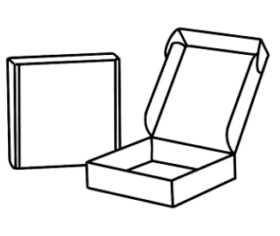 Bául
Bául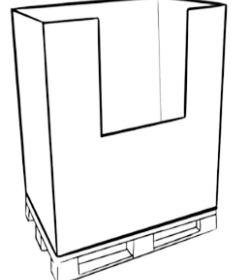 Box-pallet
Box-pallet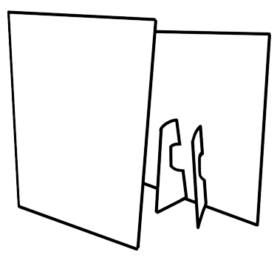 Displays
Displays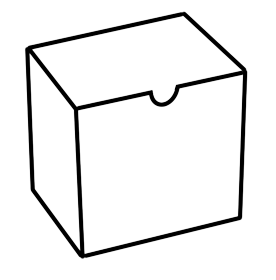 Estuchería
Estuchería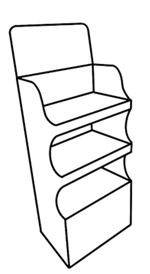 Expositor
Expositor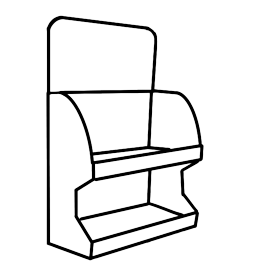 Exp.sobremesa
Exp.sobremesa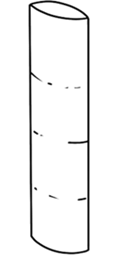 Tótem
Tótem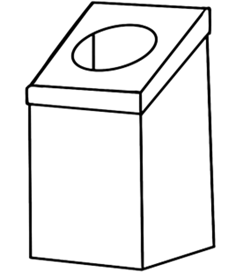 Otros
Otros
